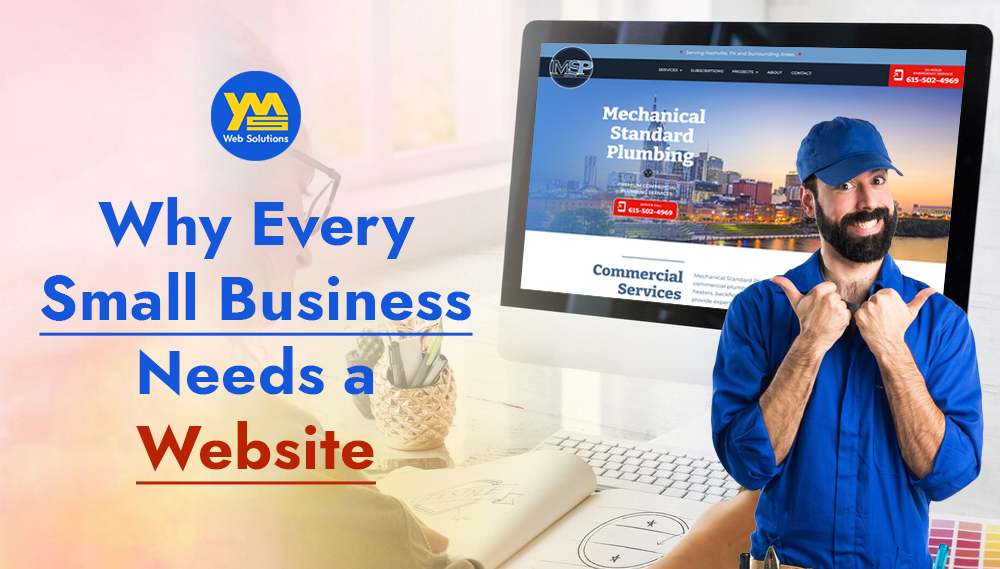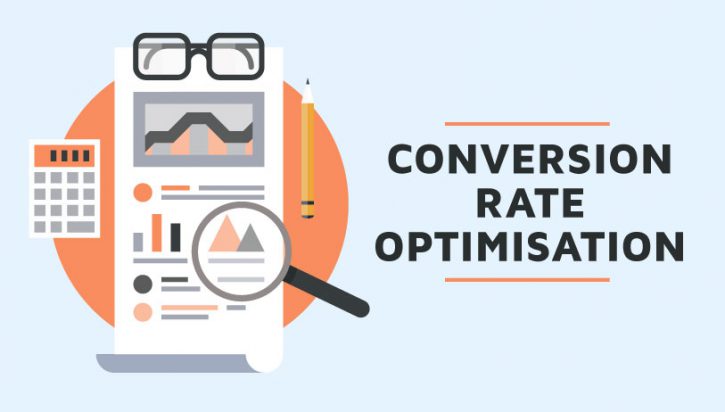Optimisation is the principal ingredient in digital marketing for everything from your website itself to your presence on social media. Marketing in the online world mainly focuses on how to best optimise your online presence to drive conversions.
However, most of the optimisation techniques are built to bring people to the top of your sales funnel. But if most of your potential customers leave the funnel before reaching the end, then your site isn’t really making the most effective conversion.
That’s where Conversion Rate Optimisation (CRO) comes in. But let’s first start with the definition of conversion rate.
What is a conversion rate?
Conversion rate is a crucial metric in digital marketing that calculates the percentage of users who successfully fulfil a specific desired action among the total number of visitors to your website or marketing platform.
Eventually, the conversion rate works as a key measure of your website’s success, as it shows the percentage of visitors who take valuable actions like placing orders, subscribing, downloading, or signing up for trials. Understanding and optimising this rate is crucial for a successful digital strategy.
What is a reasonable conversion rate?
There is no universal rate of good conversion. Though a good conversion rate might be influenced by factors such as niche and target device, it usually falls within the range of 2.5% to 5%. Even a mere increase of 0.5% in the conversion rate can significantly impact.
While the percentage may seem low, it’s actually quite commendable. Consider this scenario: If your goal is to boost newsletter subscriptions, and your conversion rate is 5% with 1,000 visitors, approximately 200 of your visitors are actively signing up.
Remember, achieving a 100% conversion rate is unattainable, and even reaching 50% is a highly challenging feat.
How to calculate the conversion rate

In order to determine the conversion rate, just divide the number of conversions by the total number of visitors, then multiply the result by 100 to express it as a percentage. For example, consider an ecommerce site that gets 4000 visitors in a month and achieves 80 sales. In this case, the conversion rate is calculated as 80 divided by 4000, resulting in a 2% conversion rate.
Achieving a high conversion rate shows that your website boasts a top-notch design, effective formatting, and undeniable appeal to your specific target audience. On the other hand, a low conversion rate may stem from various factors, encompassing both website performance and design considerations.
What is conversion rate optimisation?
CRO is a process to analyse user behaviours to improve your site’s conversion rate. It will help you identify the parts of your website that are downplaying your conversion rate and how to fix the issue.
An essential part of CRO is maximising the value of your website’s traffic, not increasing it.
First, a speedy vocabulary lesson:
- Conversion: The desired user action that you want your users to perform when they visit your website. Normally, this refers to a purchase, but it can be an email signup, account registration or app download.
- Conversion rate: Percentage of visitors who convert after visiting your website. In other words, it is the number of conversions divided by the number of visitors.
- Call-to-Action (CTA): A call to action is usually a button instructing the audience to click on it and take a conversion-focused action. Some common examples are Buy Now, Order Today etc.
- The funnel: The step-by-step process visitors take to convert. This includes the landing page and CTA all the way to confirmation.
- The rate of exit: It expresses the number of people who visit a page but leave without performing any desired action. It is expressed in percentage.
- The rate of abandonment: The number of people per 100 visitors who enter a conversion funnel but do not finally convert.
7 conversion rate optimisation strategies
There are several strategies that you can deploy to enhance your conversion rate. Let’s delve into each of these strategies for optimal implementation.
1. Optimise page loading speed
Page load time denotes the duration it takes for a website or web page to completely load and become visible on the screen once a user initiates a visit to the site.
A comprehensive analysis of over 4 billion web visits reveals that desktop users experience an average web page load time of 2.5 seconds, while mobile users typically face a slightly longer duration of 8.6 seconds. And conversion rates on websites decrease by 4.42% for every second of loading time within the initial five seconds.
Hence, enhancing your page load speed is crucial for elevating conversion rates. Here are some proven tips to enhance your website’s loading speed. Before making any changes, audit your site and perform potential fixes.
- Use performance testing tools.
- Optimise all the visuals.
- Eliminate unnecessary plugins.
- Utilise a Content Delivery Network (CDN).
- Install a caching plugin.
- Downsize JavaScript and CSS files.
2. Simplify checkout process
Enhancing the checkout process is a strategic initiative employed by retailers or website owners to boost conversion rates. The objective is to reduce distractions and bolster trust at every step of the checkout journey.
For example, a noteworthy number of potential buyers opt to abandon their shopping carts when compelled to go through the account creation process. So, by allowing guest or social checkout, you can empower shoppers to finalise their purchases seamlessly, eliminating the need to enter personal details like birthdates or passwords.
Or you can offer the simplicity of 1-click checkout, where shoppers enter their information just once. Subsequent visits are effortlessly streamlined as their email, shipping address, and credit card details are securely stored and automatically filled in for their convenience.
3. Utilise scarcity to create FOMO
By using scarcity tactics, you can enhance your conversion rates, transforming tentative visitors into enthusiastic customers. It is scarcity that creates a sense of urgency, taps into our fear of missing out, and motivates us to take prompt action.
Imagine strolling through a website and stumbling upon a landing page displaying a sign proclaiming a limited-time offer: Buy One, Get One Free. Your immediate reaction will be to dash into the store and seize the opportunity before it vanishes. You can even use a timer or countdown to create FOMO.
Here are some examples of words or sentences that create scarcity
- Deal ends tomorrow
- Only 6 hours left
- Only for members
- Limited edition
- Exclusive offers
4. Use social proof
Use social proof to leverage other user’s influence to encourage users to achieve the conversion goals. It is always social proof that assures potential buyers of the credibility of your business. So, when you are integrating customer reviews right on your product page, you can build trust with customers as it helps demonstrate the value and quality of your product or service.
Here are some effective ways to showcase social proof on your website:
- Display customer reviews and testimonials
- Display trust badges and security seals
- Showcase the percentage of positive reviews
- Awards and case studies
- Showcase social media mentions and number of shares
- Add customer photos or videos
- Celebrity or influencer endorsement
5. Offer discounts and sale promotions
You can create a sale promotion and take advantage of it. A discount code or flash sale can always make customers happy and excited and prompt them to buy more. Hence, there is always a chance to get a spike in the conversion rate.
Targeting occasions such as Thanksgiving, Christmas, Halloween or New Year, you can launch a seasonal offer and go for email marketing or display banners on your website to notify your customers before the sale takes place. Even you can offer a free trial or provide a demo gift.
In addition to employing direct sales and promotional strategies, consider providing enticing offers such as complimentary delivery, a solid product guarantee, and customer-friendly refund policies to cultivate a customer-centric experience that goes beyond mere transactions.
6. Analyse your bounce and exit rates
The bounce rate is essentially the number of visitors who land on the homepage but do not proceed to navigate to a second page. The exit rate is calculated based on the individuals who leave your website after arriving on a specific page.
If you are paying attention to conversion rate optimisation, you need to understand your bounce rate and exit rate. Even if the two metrics almost measure the same thing, it is crucial to examine your visitor’s subsequent actions to distinguish between an exit and a bounce.
When a high exit rate on your Thank you page may not be a problem, a high exit rate on your checkout page signals a potential issue within your sales funnel. Similarly, there are several factors that can affect your bounce rate, including the length of your content, the value you deliver on each page of your site or the optimisation level of each page.
7. Work on the mobile experience
With a growing reliance on mobile devices for web browsing, it has become crucial for businesses to enhance their websites for optimal mobile compatibility. A website that is thoughtfully optimised for mobile devices not only ensures a seamless experience for visitors accessing the site via their mobile devices but also significantly enhances the likelihood of these visitors taking the desired action, be it by subscribing to newsletters or making a purchase. Otherwise, you will be missing out on a huge portion of potential customers.
When optimising for mobile devices, consider factors like call-to-actions, design, navigation, forms or images to ensure a positive outcome. Regularly test your site on several mobile devices, optimise images and content, use larger fonts and make buttons easy to tap.
So, these are the trends in CRO that you can keep testing to see an increase in conversions. However, conversion rate optimisation (CRO) requires the use of the appropriate tools. Here comes the necessity of CRO tools.
What are CRO tools?
Conversion rate optimisation tools encompass software applications or platforms utilised by marketers, developers, and UI/UX designers to delve into user behaviour, identify potential obstacles, and facilitate experimentation with the user experience, all with the aim of enhancing conversion rates.
Alongside identifying conversion barriers, you can conduct A/B testing and measure other key performance indications such as click-through rates, bounce rates, etc.
There are a ton of CRO tools to choose from. Here are some of the widely used ones.
- Google Analytics
- Optimizely
- ClickUp
- VWO
- Adobe Analytics
Create a conversion rate benchmark
To set up the goals for your Conversion Rate Optimisation plan, you first need to determine the current state of your site. In other words, you need to set goals. Before you can figure out where you want to be in terms of CRO, you first need to determine where you are currently.
Here’s what you should begin measuring:
- Goals: Login to Google Analytics. Then, go to the Admin panel. Add goals and choose the goal type. When labelling the goal, choose specific names that describe the goals.
- Funnel: For a conversion process with many steps, use the “Use funnel” option. Input the URLs that belong to your goal funnel. If you only want to count those visitors who enter at the top of the funnel, checkmark the Required Steps box. Otherwise, Google Analytics will track visitors that enter the funnel in the middle or end.
- Value: Your conversion tracking strategy will shape what you put here. If you don’t know exactly how much a conversion is worth, you can input an approximate amount. If you’re using e-commerce goals, this will be the revenue you get from the product.




